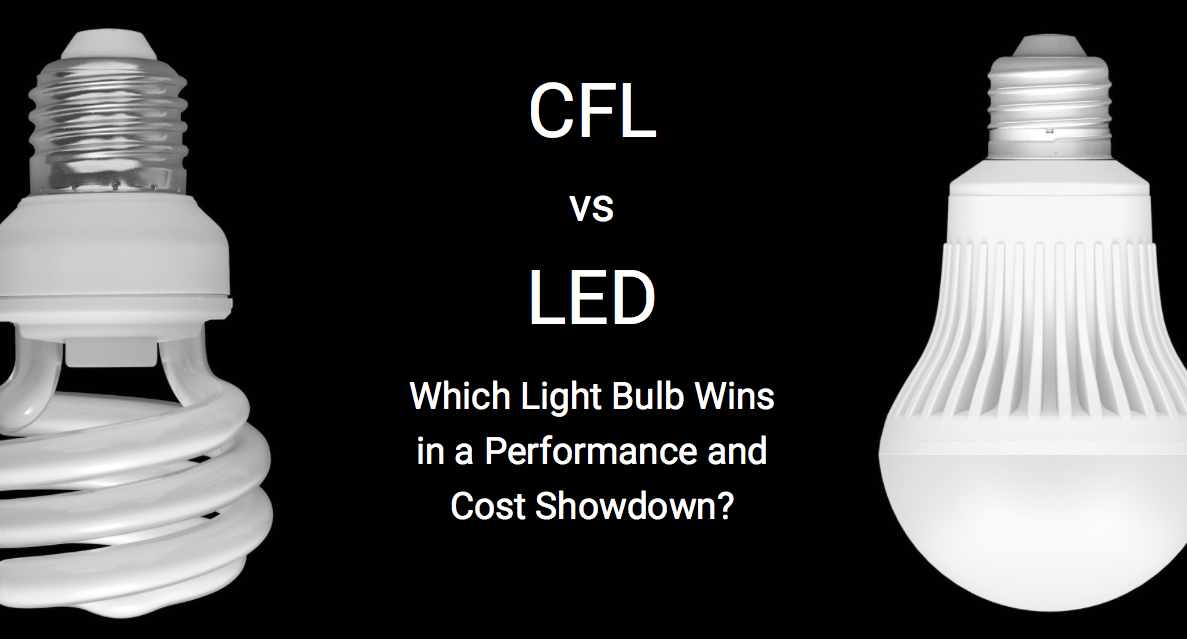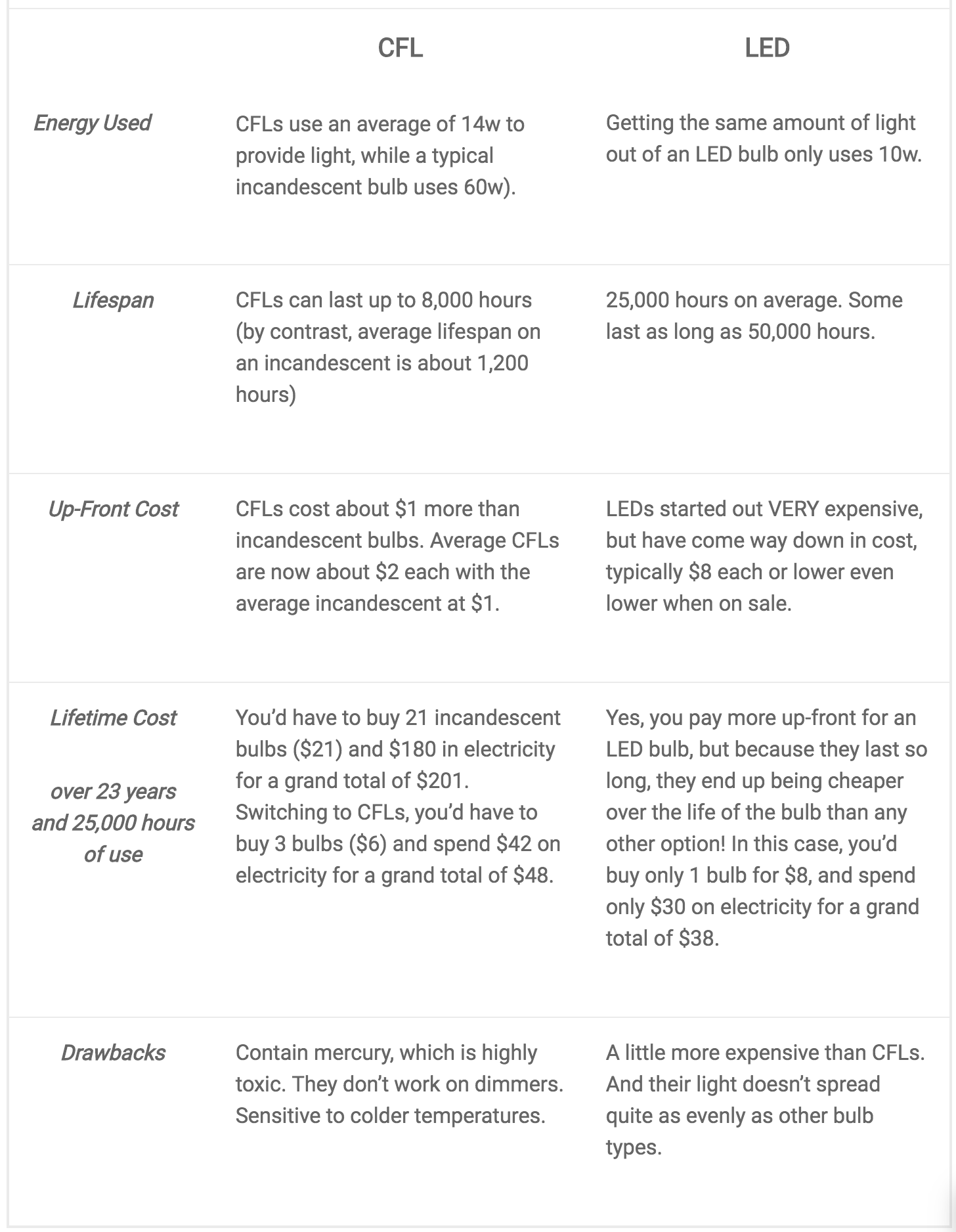
CFL vs LED: Which is the better choice for home lighting?
There used to be a time when you really only had one kind of light bulb you could buy: regular incandescent bulbs, which are not very energy efficient compared to the choices available today. The four main types of light bulbs available today include incandescent, halogen, compact fluorescent (CFL), and light-emitting diode (LED) bulbs. For people looking for the most energy-efficient option, it tends to boil down to CFL vs LED. In this article we’ll explain which is the better choice and how you can get some at no cost.
Which Light Bulb Wins in a CFL vs LED Showdown and Why?
You might notice we aren’t even going to talk about incandescent light bulbs in this article, except as a benchmark for comparing the energy efficiency of CFL vs LED bulbs. Incandescent bulbs use a LOT of energy relative to newer choices, and they don’t last very long either.
In fact, at some point it is likely the regular incandescent light bulb will actually be completely banned, at least for regular lighting purposes. Some countries started phasing them out in 2005 and more have joined. The United States started its phase-out of incandescent bulbs in 2014, which is why these days they’re getting harder to find. The phase-out process takes years in most countries, and of course politics always end up getting in the way and delaying things, but incandescent bulbs are definitely becoming increasingly obsolete for general lighting purposes in people’s homes. Which leads us to the showdown of CFL vs LED:

When you start to multiply those impacts by the number of bulbs used in your home, and then start multiplying that by all the homes there are out there, you can see why LEDs are the future. In fact, we recently wrote about how the recent decline in residential electricity use can be attributed by the growing adoption of LED light bulbs – see Why is Residential Electricity Consumption Declining in the US?
There are quite a few people who still prefer the quality of light that comes from incandescent bulbs compared to LED light. But LEDs have gotten a whole lot better in this regard, so it’s still worth starting to phase out your incandescent bulbs as they burn and get LED bulbs to replace them. There are a variety of LED bulb types available now depending on what you’re looking for. Stay tuned for a future article about how to get the right LED light bulbs to meet your in-home lighting needs.
How You Can Get No-Cost LED Light Bulbs from NEEECO and Mass Save®
If you agree that LED light bulbs are the clear winner in the CFL vs LED showdown, you can actually get some at no cost to you! This is a great chance to try them out and see what you think of them. All you have to is sign up for a Mass Save® no-cost home energy assessment! This is made possible through Mass Save®, a collaborative effort of local utility companies and energy efficiency service providers like NEEECO.
You might not know it, but there’s a small charge on each of your utility bills that goes to fund Mass Save®. In other words, you’ve already paid for a home energy assessment! All you have to do is claim it to make it happen. It’s a great way to find out how much money and energy you could by saving if you took action to address areas of improvement. Here’s what is included in a Mass Save® NEEECO home energy assessment:
- A custom report outlining ways to improve your home’s energy efficiency.
- ENERGY STAR® LED light bulbs.
- Advanced power strips.
- Low-flow showerheads.
- Faucet aerators.
- Programmable thermostats or discounted wireless thermostats (installed during a second appointment).
All of this is made available to you at no cost, so you literally have nothing to lose and potentially a lot to gain in terms of saving money on your utility bills, as well as play your part in reducing overall energy use, which is always a good thing.
Call (781) 514-5882 or contact us to get started with a no-cost Mass Save® home energy assessment.
